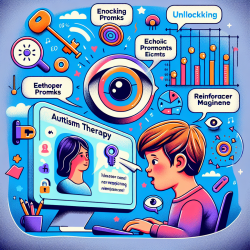Introduction
In the realm of speech-language pathology, the pursuit of data-driven decisions is crucial for optimizing therapeutic outcomes. TinyEYE, a pioneer in online therapy services, is committed to leveraging scientific insights to enhance the effectiveness of speech therapy interventions. A recent study on Bose–Einstein correlations (BEC) in proton-proton (pp) collisions, conducted at the CERN Large Hadron Collider, offers intriguing parallels that can inform and inspire innovative approaches in speech therapy.
Understanding Bose–Einstein Correlations
Bose–Einstein correlations are a quantum phenomenon that reveals the spatial and temporal characteristics of particle emission sources. In high-energy physics, these correlations are used to analyze the space-time geometry of particle interactions, providing insights into the size and shape of the emission source. The study of BEC in pp collisions at center-of-mass energies of 0.9 and 7 TeV has shown how these correlations can be used to understand complex systems.
Applying BEC Insights to Speech Therapy
While the study of BEC is rooted in physics, the underlying principles of analyzing complex systems and extracting meaningful patterns can be applied to speech therapy. Here are a few ways in which insights from BEC research can enhance speech therapy practices:
- Data Analysis: Just as BEC studies use statistical methods to analyze particle interactions, speech therapists can employ similar data analysis techniques to assess therapy progress and outcomes. By systematically analyzing data from therapy sessions, therapists can identify patterns and adjust interventions accordingly.
- Understanding Complex Systems: Speech therapy often involves navigating complex communication systems. Insights from BEC research can inspire therapists to consider the broader context of a child's communication environment, including social interactions and environmental factors, to develop more holistic therapy plans.
- Optimizing Therapy Techniques: The concept of optimizing parameters in BEC studies can be translated into optimizing therapy techniques. By experimenting with different approaches and measuring their effectiveness, therapists can refine their methods to achieve better outcomes for children.
Encouraging Further Research
The intersection of high-energy physics and speech therapy may seem unconventional, but it underscores the value of interdisciplinary research. Speech therapists are encouraged to explore scientific literature beyond their immediate field to discover innovative ideas that can enhance their practice. By staying informed about advances in various scientific domains, therapists can continuously improve their skills and contribute to the development of evidence-based interventions.
Conclusion
The study of Bose–Einstein correlations in pp collisions provides a fascinating example of how complex systems can be analyzed and understood. By applying similar principles to speech therapy, practitioners can enhance their ability to make data-driven decisions and optimize therapeutic outcomes for children. TinyEYE remains committed to integrating scientific insights into its online therapy services, ensuring that children receive the most effective and personalized care possible.
To read the original research paper, please follow this link: Two-particle Bose–Einstein correlations in pp collisions at.










